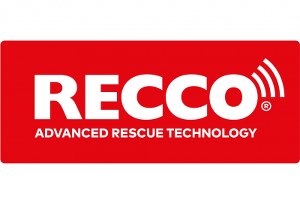Salzburg Says Experience Sustainable Winter Fun Sustanably

Ski tourism is still portrayed far too often as being harmful to the environment and a waste of resources. However, this has not been true for a long time. In fact, Salzburg's winter sports centers have become pioneers in sustainable tourism.
Whether skiing, cross-country skiing, snowshoeing or wellness, Salzburg offers its guests unique experiences in the midst of a beautiful natural landscape that must be preserved in the future. Therefore, nature conservation, climate neutrality, careful handling of food - in other words, sustainability - are top priorities in Salzburg. This starts with the journey: in winter, the ÖBB trains from Vienna to Salzburg's winter sports regions several times a day. Deutsche Bahn also offers attractive long-distance connections to the Salzburg region. Once on site, guests are then taken directly from the train station to their holiday accommodation with the hotel's own shuttle service. Once you have arrived, you can safely do without the car, because the free ski shuttle starts close to the front door almost everywhere. In addition, there is free travel to many ski regions, such as Snow Space Salzburg, from all over Salzburg with a valid ski pass.
At a recent Ski amadé industry meeting, Professor Ulrike Pröbstl-Haider from the University of Natural Resources and Life Sciences in Vienna dispelled the prejudice that operating the slopes is itself destructive to nature and wastes resources. "There are a lot of false reports circulating about skiing. It is not the skiing that is the biggest CO2 factor on a winter holiday, but the journey there, which is still too often by car. The skiing itself is responsible for only 10% of the total energy consumption in the ski area. And the slopes only take up 1% of Austria's alpine area," explained Pröbstl-Haider. The water for snowmaking is also not used. It melts continuously in spring after the season. "Due to the increase in flooding in winter, storing it in ponds and using it for snowmaking is actually beneficial," emphasises the biologist. In addition, it has been proven that there is more biodiversity on ski slopes than in many private gardens or agricultural fields.
In addition, cable cars have already achieved a high level of self-generation. These include hydroelectric power plants as well as photovoltaic systems (which are highly efficient in winter because snow reflects light). Small-scale solutions are being sought for wind power. Mountain railways are also pioneers in saving energy and separating or avoiding waste. Many snow groomers already run on HVO fuel (hydrogenated vegetable oil). This reduces CO2 emissions to almost zero. Digital snow measurements in snow groomers can also save up to 20% of resources. What is new here is the use of AI in preparation: various measurement data such as weather, terrain and snow conditions or height can now be intelligently combined.
Numerous best practice examples
In the 2019/20 winter season, Snow Space Salzburg had its carbon footprint measured for the first time by an external company. At that time, the company, which employs around 430 people, emitted 4,148 tons of CO2. By the 2023/24 season, this figure will have fallen by 60% to 1,638 tons. But CEO Wolfgang Hettegger is not satisfied with that: "We want to be climate-neutral in spring 2026." The 30 piste groomers, as well as the scheduled ski buses, have been converted to the sustainable fuel HVO. The cable cars and snowmaking systems are operated 100% with green electricity. "We have found that the journey of employees is an essential part of the carbon footprint. That is why electric shuttle buses were purchased that employees can use to travel to work free of charge and in an environmentally friendly way," explains board member Christina König.
As mentioned, the arrival and departure of winter sports enthusiasts causes significantly more emissions. The "Ruck Zug" campaign introduced two years ago will therefore be continued. It enables ski enthusiasts from all over the state to travel to the ski area and back home for free using public transport. "The number of participants has risen from 2,000 in the 2022/23 winter season to 4,500 last season," says a delighted Johannes Gfrerer, Managing Director of the Salzburg Transport Association. He expects "it to continue in this vein."
Sustainability Strategy for Success
The Gastein mountain railways recently published their 2023 sustainability report. Two years ago, the company committed to a scientifically supported sustainability strategy that takes a 360-degree look at the cable car operation, its importance for tourism and mobility in the valley, and the role of the mountain railways as employers. The mountain railways are supported and advised on this path by the experts at Terra Institute GmbH and by tourism researcher Professor Kurt Luger from the University of Salzburg. In addition to the commissioning of numerous photovoltaic systems to increase the proportion of self-generated electricity, another milestone will be reached in the 2024/2025 winter season with the environmentally friendly fuel HVO. The complete conversion of all diesel vehicles, including snow groomers, to HVO makes a significant contribution to CO2 reduction and is the most successful to date.
“Through this change, further efficiency measures, the conversion of the vehicle fleet to e-mobility and measures to increase building efficiency through the use of renewable energies, we expect an emissions reduction of 84% by 2025,” says board member Andreas Innerhofer.
"Winter tourism only requires 0.9% of Austria's total energy consumption. The companies - from the cable cars to the hotels - are investing sustainably in order to further improve this figure," emphasizes Salzburg's cable car chairman Erich Egger. The difficult weather conditions that occur from time to time are mastered by the cable car industry through perfect snow management and innovative snowmaking methods. "The consistency of the technical, but chemical-free snow is impressive these days. It can withstand even large amounts of rain. And if there are problems with the valley runs, the guests simply move to higher regions," summarizes Egger.













